Patents
Device for attracting submarines and the like
Submarines were a new menace during World War I, but Louis Schramm figured he had a way to defeat them. His invention (Patent No. 1,143,233) involved powerful electromagnets that would pull submarines to the sides of a ship where they could be electrified, killing their crew.Critics pointed out that the magnets would attract anything metallic to the side of the ship, including mines.

Posted By: Alex - Mon May 08, 2023 -
Comments (3)
Category: Boats, Oceans and Maritime Pursuits, War, Patents, 1910s
Wearable Canopy
Stylish rain gear.More info: Patent No. 1,888,909

Posted By: Alex - Sun Apr 30, 2023 -
Comments (3)
Category: Fashion, Patents, 1930s, Weather
The Mole Torpedo
Weapon tunnels through the earth to the enemy. Why is this not in constant use today? Too easy nowadays to sense seismic activity?Full patent here.
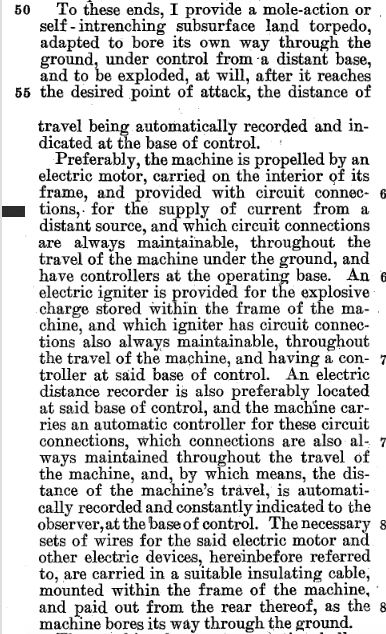
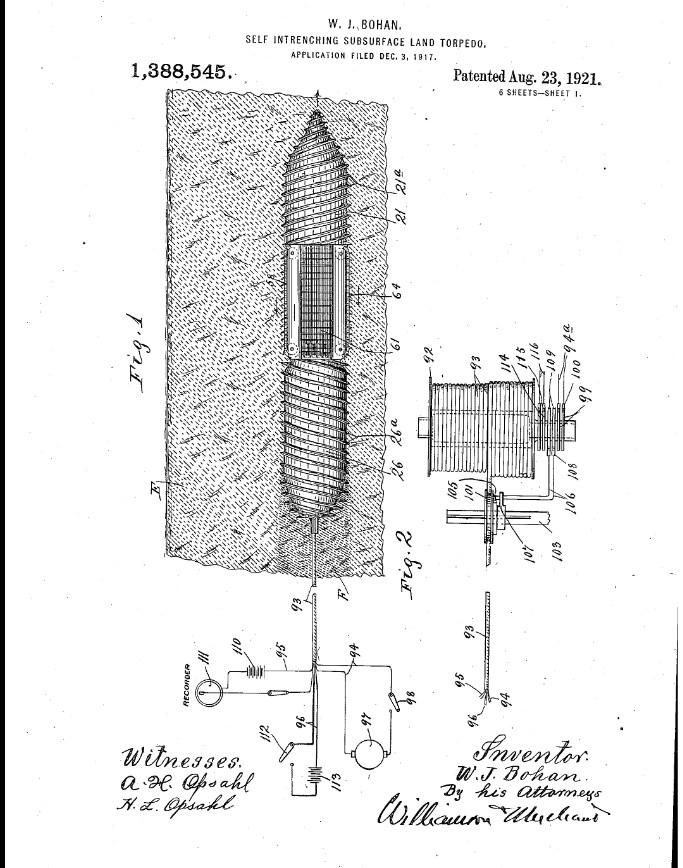
Posted By: Paul - Mon Apr 10, 2023 -
Comments (0)
Category: Death, Inventions, Patents, War
Electro-Stimulation Bicycle
Inventors Young Sam Chun and Hyoung Tae Kim of Korea were recently granted Patent No. 11,458,310 for an "electro-stimulation type indoor bicycle." If I'm reading the patent correctly, it gives you an electric shock if you pedal too slow: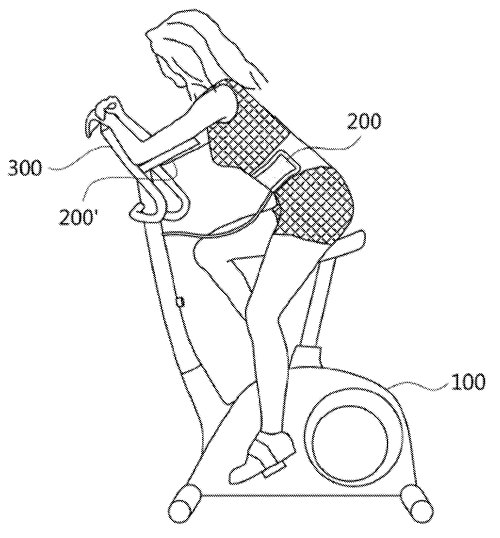
Posted By: Alex - Fri Apr 07, 2023 -
Comments (5)
Category: Exercise and Fitness, Patents
Wailing-Activated Rocking Cradle
Mister Muzzey had a good idea way back in 1962 and was actually ahead of his time--his patent also references a baby monitor to transmit the cries to the parents' room--but I wonder if his device ever went into production? As you can see below, there are modern versions today.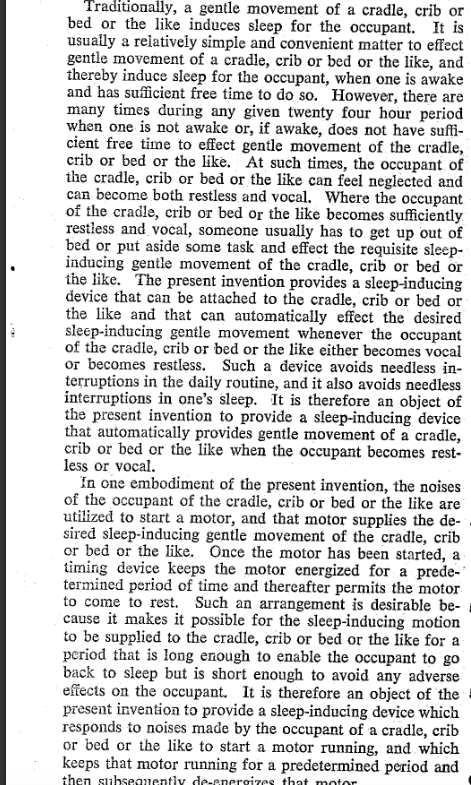
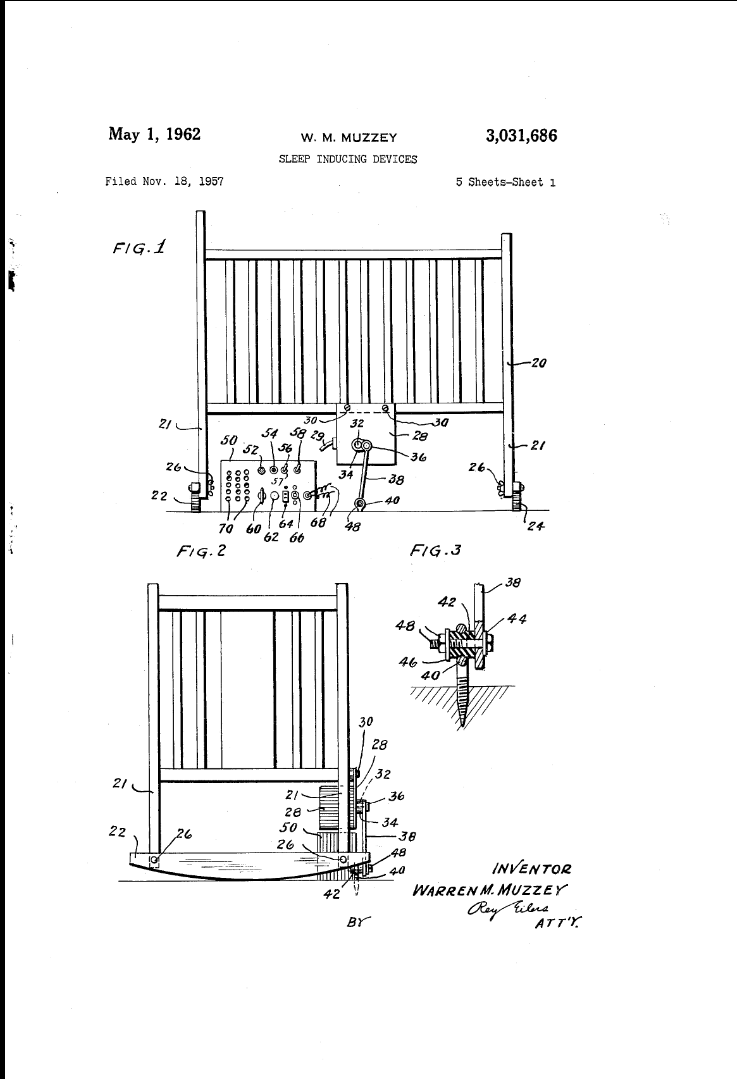
Amazon link.
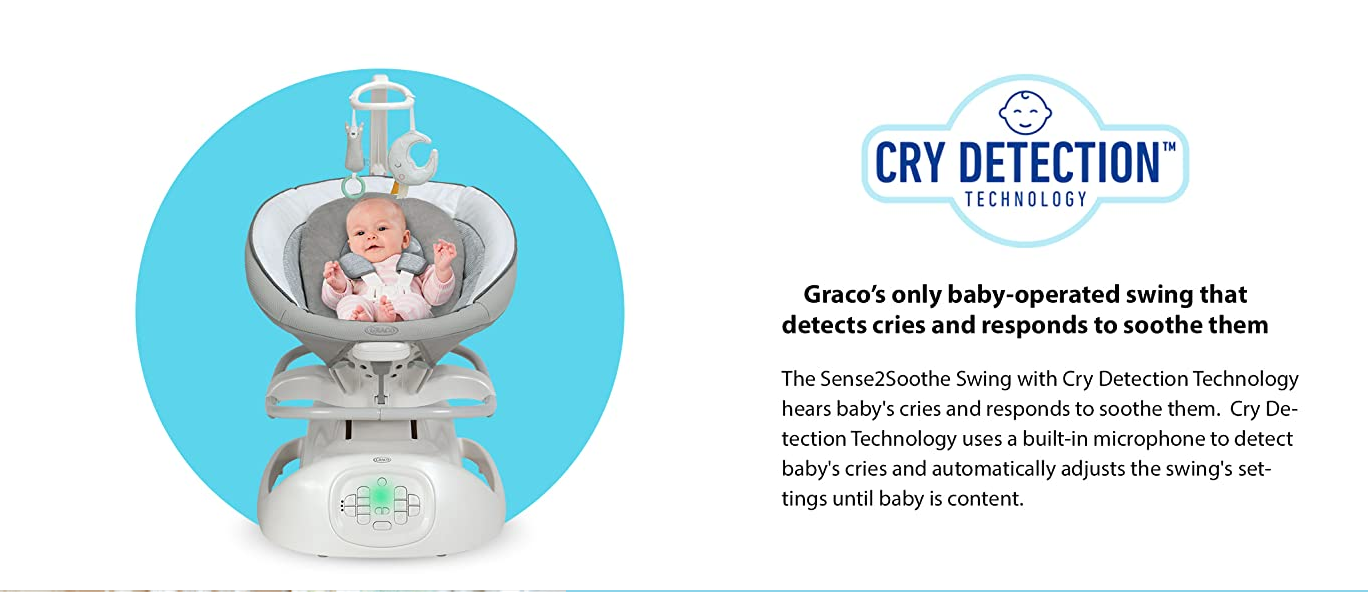
Posted By: Paul - Mon Apr 03, 2023 -
Comments (0)
Category: Babies, Domestic, Inventions, Patents, Parents, 1960s, Cacophony, Dissonance, White Noise and Other Sonic Assaults
A third leg
Back in the nineteenth century, Alexander Robinson operated a photographic studio on the Isle of Man. In 1885 he applied for a British patent (British Patent Specification 15,376) for an unusual invention — a fake third leg, which he envisioned using as a prop in his studio.
From his patent application:
His invention makes more sense once you know that the Isle of Man's heraldic coat of arms consists of three legs. I imagine that tourists would come to his studio to get a photograph of themselves with three legs, just like the Isle of Man.

I don't know if Robinson was ever granted a patent for this. The British patent office, unlike the American one, is not fully searchable online. More info: History of Photography journal
Posted By: Alex - Tue Mar 14, 2023 -
Comments (3)
Category: Photography and Photographers, Patents, Nineteenth Century
Select-A-Size Mirror
The Select-A-Size mirror, invented by Milton Doolittle, had a knob you could turn to make yourself look slimmer or fatter. As explained in the 1976 Canadian patent:

Palm Beach Post - Mar 20, 1983
Posted By: Alex - Thu Mar 02, 2023 -
Comments (4)
Category: Patents, 1970s, Dieting and Weight Loss
Means of protection for feminine wear
Thanks to Natalie Teeple's invention, women riding public transportation in the 1910s had the means to give a sharply pointed response if "mashers" pressed up against them.It is the object of my invention to guard against undue familiarity of the character designated by the provision of means whereby the offender is automatically warned, punished, and deterred from persistent offense; and to this end my invention consists primarily of an elastic resilient spring arranged in conjunction with a spur or prick and adapted to be attached to an under-skirt in such manner that when subjected to extraneous pressure the sharp point will protrude;
Compare this with the "defense shoes" of the 1950s.

Posted By: Alex - Sun Feb 26, 2023 -
Comments (1)
Category: Patents, 1910s, Women
Dermal Steaming Apparatus for the Head
Full patent here.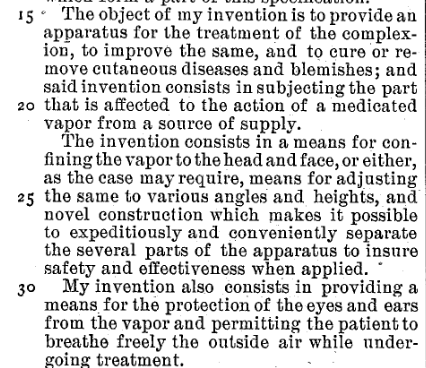
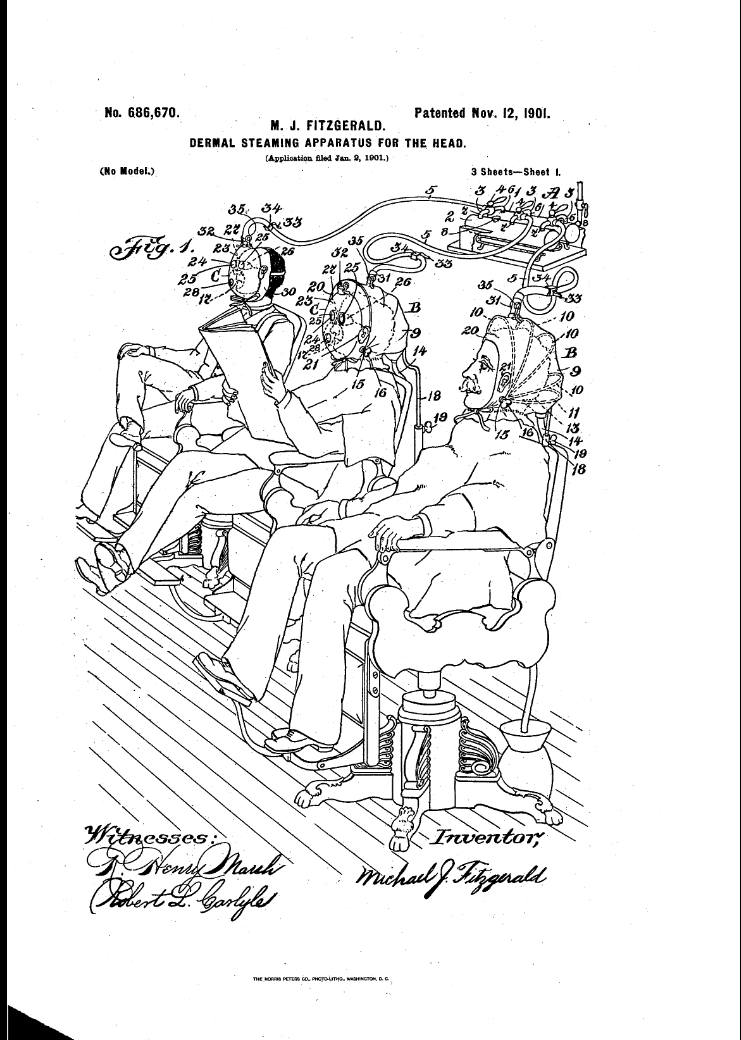
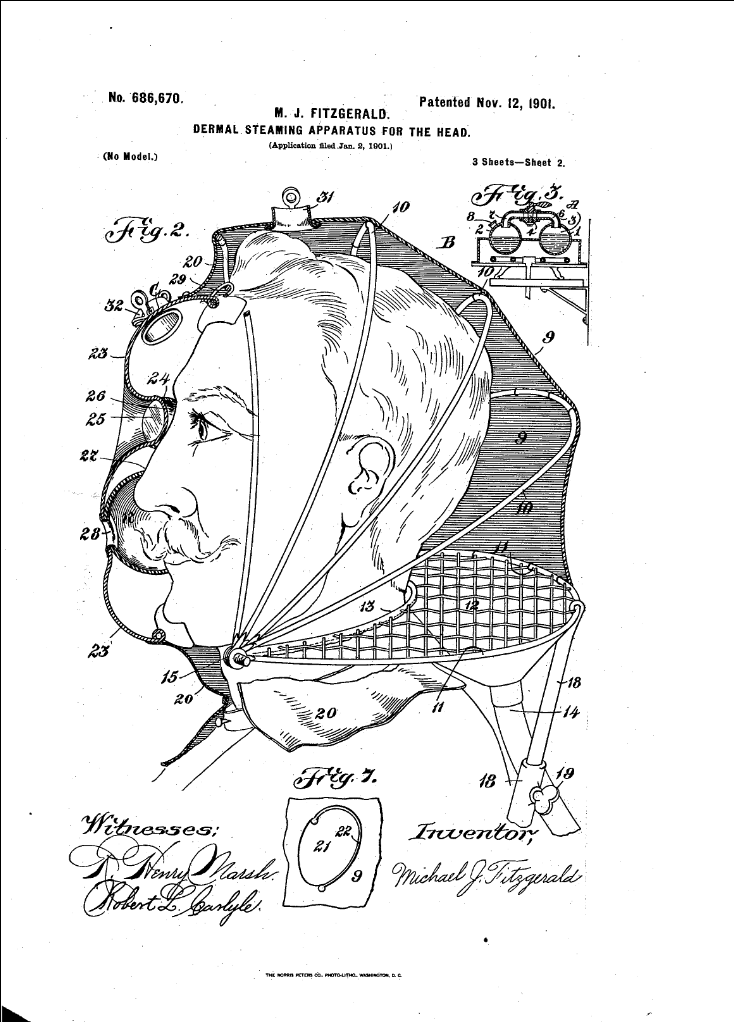
Posted By: Paul - Wed Feb 22, 2023 -
Comments (0)
Category: Hygiene, Patents, 1900s
Chess Football
Patent No. 5558335. Pretty much like regular chess, but inside a simulated football stadium.
Posted By: Alex - Sun Feb 12, 2023 -
Comments (2)
Category: Sports, Patents

| Who We Are |
|---|
| Alex Boese Alex is the creator and curator of the Museum of Hoaxes. He's also the author of various weird, non-fiction, science-themed books such as Elephants on Acid and Psychedelic Apes. Paul Di Filippo Paul has been paid to put weird ideas into fictional form for over thirty years, in his career as a noted science fiction writer. He has recently begun blogging on many curious topics with three fellow writers at The Inferior 4+1. Contact Us |




